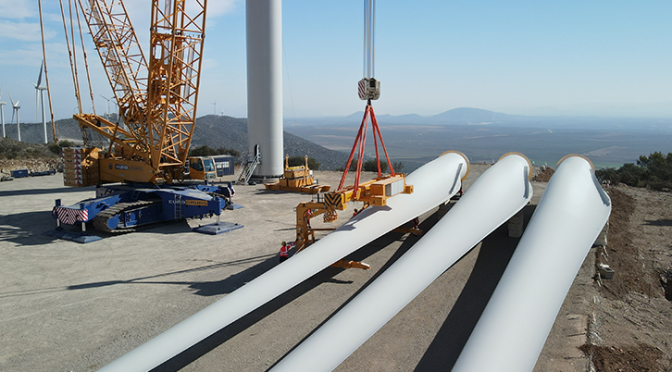Wind turbine blade recycling is emerging as a key component of sustainable energy solutions, as the industry grapples with the challenge of disposing of these massive structures in an environmentally friendly manner. With the global push for renewable energy sources, wind power has become one of the fastest-growing sectors in the energy market. However, the increasing number of wind turbines also means that there will be a significant volume of blades reaching the end of their service life in the coming years. This presents a unique challenge for the industry, as the blades are made from composite materials that are difficult to recycle and have a limited market for reuse.
One of the primary reasons wind turbine blades are difficult to recycle is their composition. They are typically made from a combination of glass or carbon fibers and thermosetting resins, which are chosen for their lightweight and high-strength properties. However, these materials are not easily broken down or separated, making traditional recycling methods ineffective. As a result, many end-of-life blades are currently being sent to landfills, which is not a sustainable solution for the environment or the industry.
Recognizing the need for a more sustainable approach, researchers and companies around the world are developing innovative methods to recycle wind turbine blades. One such method involves a process called pyrolysis, which uses high temperatures to break down the composite materials into their constituent parts. The fibers can then be separated from the resin and reused in various applications, such as construction materials or automotive parts. The resin can also be converted into a solid fuel, which can be used as a substitute for coal in power plants.
Another promising approach is the development of thermoplastic resins, which can be melted and reshaped multiple times without losing their strength. This would allow wind turbine blades to be more easily recycled at the end of their service life, as the materials could be reprocessed and used to manufacture new blades. Some companies are already producing prototype blades using thermoplastic resins, and if successful, this could become a more widespread solution in the future.
In addition to recycling, the industry is also exploring ways to extend the service life of wind turbine blades. One option is to refurbish and repair damaged blades, which can help to delay the need for disposal and reduce the overall volume of waste. Another possibility is to repurpose the blades for other uses, such as creating architectural structures, playground equipment, or even artificial reefs to support marine life.
Governments and industry stakeholders are also playing a crucial role in promoting wind turbine blade recycling. In Europe, for example, the European Union has set ambitious targets for renewable energy and is investing in research and development projects to support the recycling of wind turbine blades. In the United States, the Department of Energy has launched the Wind Blade Recycling Challenge, which aims to identify and support innovative solutions for recycling wind turbine blades.
Ultimately, the successful recycling of wind turbine blades will require a combination of technological innovation, industry collaboration, and supportive policies. By addressing this challenge, the wind energy sector can continue to grow and contribute to a more sustainable future, while minimizing its environmental impact. As the world transitions towards renewable energy sources, it is essential that we develop and implement sustainable solutions for every aspect of the industry, including the end-of-life management of wind turbine blades. By doing so, we can ensure that wind power remains a key component of our global efforts to combat climate change and create a cleaner, greener future for all.


